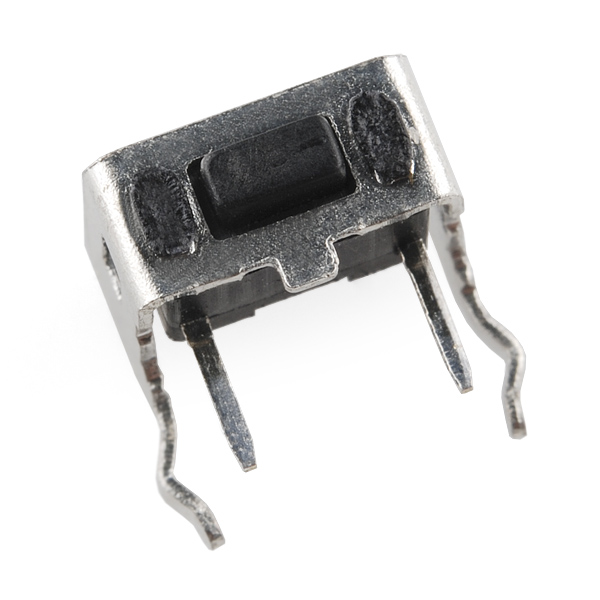This right-angle tactile switch has a great 'click' to it. Also, because it's a through-hole design it's very sturdy. Mount it on the edge of your board for easy access. These are rated for 12VDC at 50mA.
Right Angle Tactile Button Product Help and Resources
Button and Switch Basics
May 7, 2013
A tutorial on electronics' most overlooked and underappreciated component: the switch! Here we explain the difference between momentary and maintained switches and what all those acronyms (NO, NC, SPDT, SPST, ...) stand for.
Wireless Joystick Hookup Guide
January 5, 2017
A hookup guide for the SparkFun Wireless Joystick Kit.
Core Skill: Soldering
This skill defines how difficult the soldering is on a particular product. It might be a couple simple solder joints, or require special reflow tools.
Skill Level: Noob - Some basic soldering is required, but it is limited to a just a few pins, basic through-hole soldering, and couple (if any) polarized components. A basic soldering iron is all you should need.
See all skill levels
Core Skill: Electrical Prototyping
If it requires power, you need to know how much, what all the pins do, and how to hook it up. You may need to reference datasheets, schematics, and know the ins and outs of electronics.
Skill Level: Noob - You don't need to reference a datasheet, but you will need to know basic power requirements.
See all skill levels
Comments
Looking for answers to technical questions?
We welcome your comments and suggestions below. However, if you are looking for solutions to technical questions please see our Technical Assistance page.
Customer Reviews
No reviews yet.



Is there a non-right-angle version of this? I have a couple, but want more and don't remember where I got them.
Unfortunately, mini push button is the closest option in our catalog. We do use some SMD ones on our production boards, like the ESP32. You can find those on digi-key or mouser.
when are you going to start selling left angle buttons?
You can just turn the button around to make it a left angle. looks symmetrical to me.
Links to the Eagle footprints don't work. Anyone got a working footprint?
i'm looking for a regular 'on/off' button. Is this what this is?
That depends on what you mean by on/off button :)
This is a momentary button.. so you push it to make contact, and when you let go, it breaks contact. Almost all buttons at this size tend to be.
If you wanted one that you push to turn something on, then it remains on when you let go, and push it again to turn something off, you end up with something like Stomp Switch - DPDT, or another type of switch entirely.
Note that if you're using a microcontroller / arduino / whathaveyou, you can pretty easily turn a momentary button into a non-momentary one in the code you'd write; as long as it wouldn't be used as a power switch to the microcontroller itself ( that would require further shenanigans :) )
Looks like you could even mount it on the edge of a PCB, with a little elbow grease; For prototypes that saves drilling some holes by hand.
Can we get a EAGLE footprint for this?
You can find it in this library.
Super
Oops. I forgot to update that link after I moved the library. You can now find it here. No guarantees that the footprint works perfectly though.